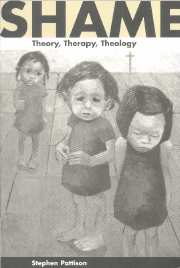Book contents
- Frontmatter
- Contents
- Preface
- Introduction
- PART I APPROACHING SHAME
- PART II ENCOUNTERING SHAME
- Overview of Part II
- 3 The ecology of shame
- 4 Chronic shame
- 5 Some effects and implications of chronic shame
- 6 Aspects of the socio-historical significance of shame
- 7 Dealing with shame: the task of integration
- Summary: towards a working understanding of shame
- PART III SHAME AND CHRISTIANITY
- Epilogue
- Bibliography
- Index
7 - Dealing with shame: the task of integration
Published online by Cambridge University Press: 05 June 2012
- Frontmatter
- Contents
- Preface
- Introduction
- PART I APPROACHING SHAME
- PART II ENCOUNTERING SHAME
- Overview of Part II
- 3 The ecology of shame
- 4 Chronic shame
- 5 Some effects and implications of chronic shame
- 6 Aspects of the socio-historical significance of shame
- 7 Dealing with shame: the task of integration
- Summary: towards a working understanding of shame
- PART III SHAME AND CHRISTIANITY
- Epilogue
- Bibliography
- Index
Summary
The punishing actions of shaming usually consist in exposing the person even more, holding him up in the pillory to the mockery of the public. Every bit of his shamefulness and ignominy is dragged into the light of day and exposed to public derision because ‘laughter kills’ …
The second step is to send the person into hiding. The humilated one is shunned. He is sent into solitude, outside human intercourse, discarded from the communality of civilized society …
Thus one can expiate the sin of exposure of weakness by open degradation and subsequent disappearance … This hiding is brought about by denial and repression or, more radically, by suicide, running away, or intoxication.
(Wurmser 1995: 82)Shame can be understood as a condition that denotes alienation, isolation, defilement, depletion and pain, both individual and social. It is not simply a psychological condition with its origins within the individual. In many ways, shame signals a state of social relationships, whether past or present. The impress of chronic shame upon individual character or personality is socially created and exploited in micro- and macro-relationships. Its consequences can be drastic: ‘Shame … provides a powerful means of social control … The potency of shame in mediating relationships with others may be one reason that, when it goes wrong, it is often associated with severe psychological disturbance’ (Tantam 1998: 172).
Chronic shame casts a baleful shadow across individuals, families, groups and whole societies. The effects and implications of chronic, habitual shame reactions are mostly negative and destructive.
Information
- Type
- Chapter
- Information
- ShameTheory, Therapy, Theology, pp. 154 - 180Publisher: Cambridge University PressPrint publication year: 2000
